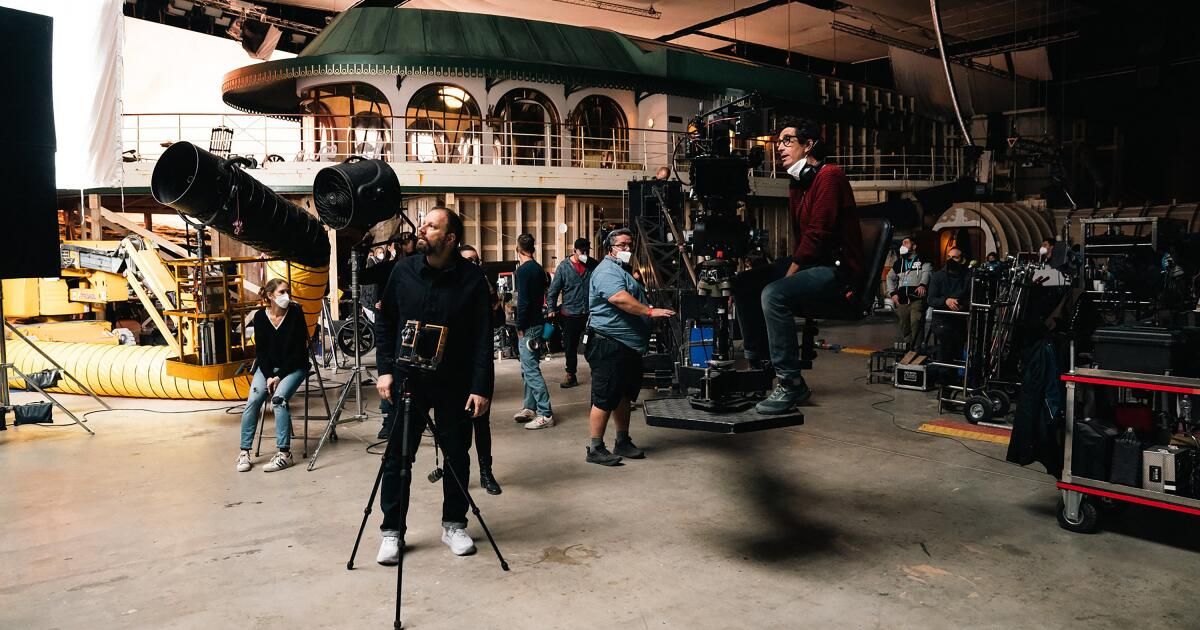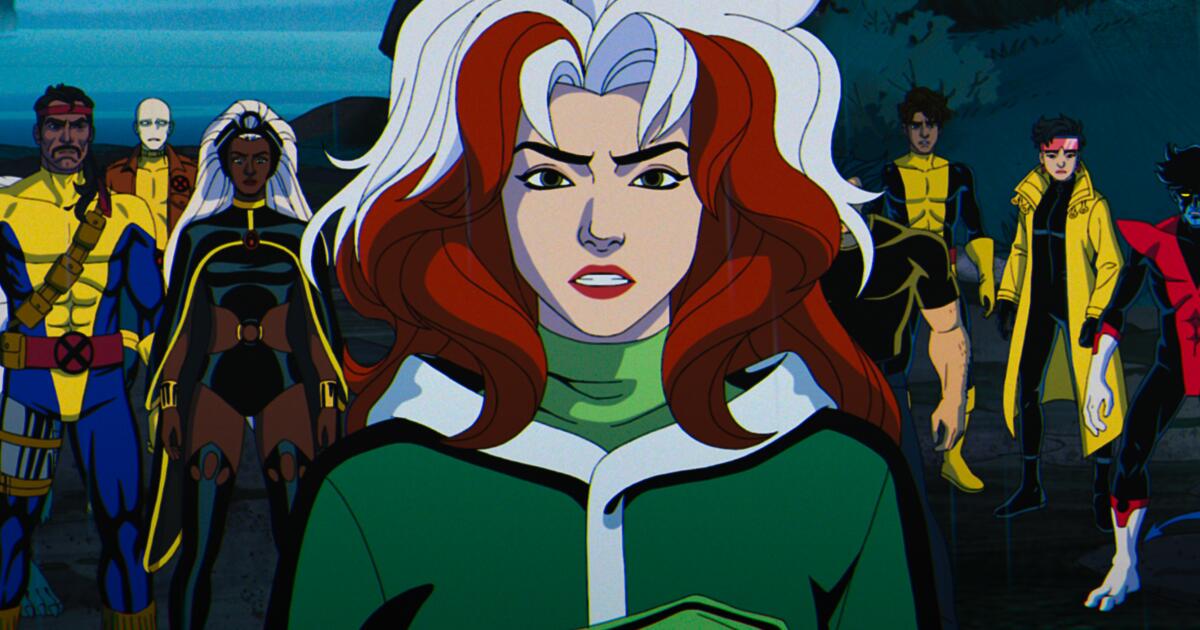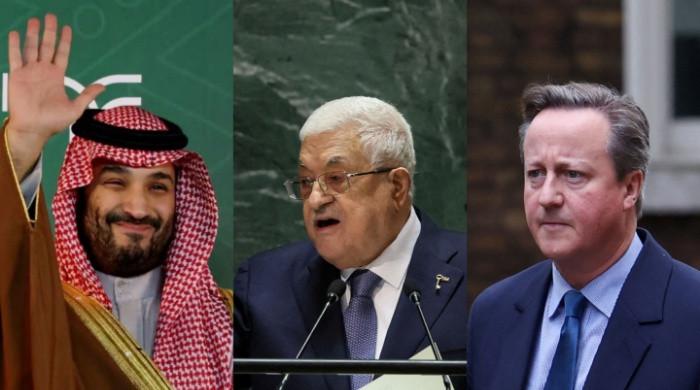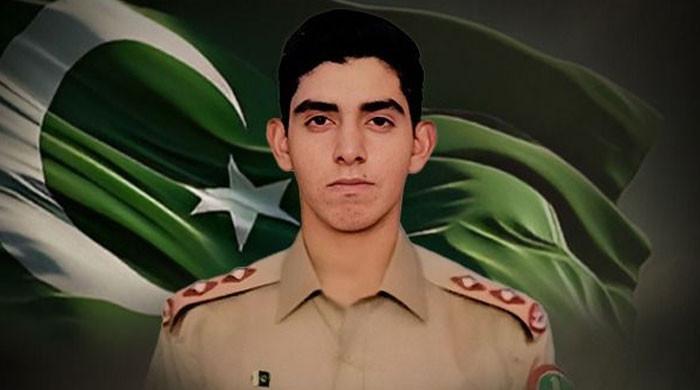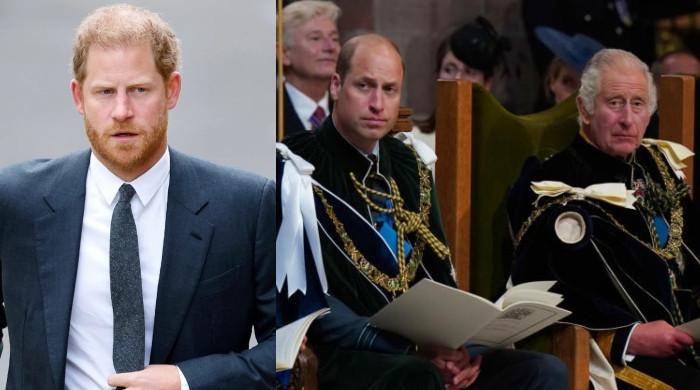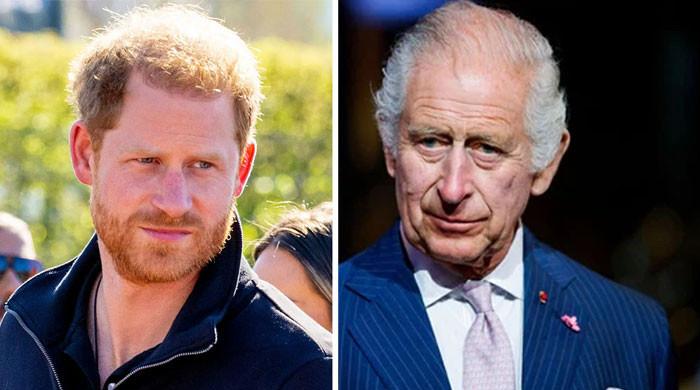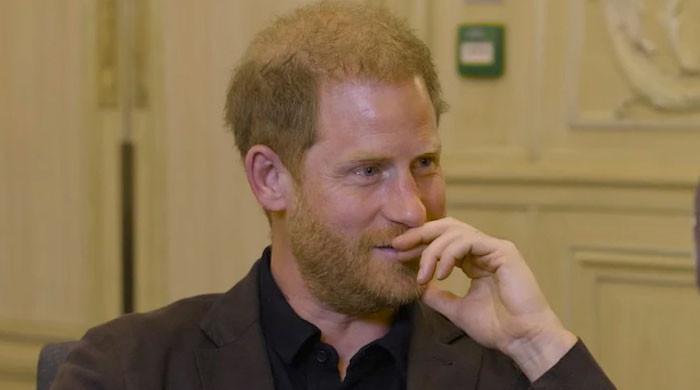For “Poor Things,” Robbie Ryan’s second Oscar-nominated collaboration with “The Favorite” director Yorgos Lanthimos and star Emma Stone, the cinematographer explored new types, techniques and equipment of 35 millimeter film. Plus, surreal ways to visualize Victorian Europe through the eyes of Bella Baxter, Stone's pregnant suicide who is reanimated by a mad scientist with the brain of her baby. Ryan's camera, which he usually operated himself, also captured more sex and nudity than in any previous work, or 20 of them combined.
Since catching the bug of making Super 8 films with his brother and cousins in 1980s Dublin, the Irish cinematographer has worked in several styles with distinctive auteurs: the kitchen sink realism of Ken Loach (“I, Daniel Blake”), naturalism with formal innovation for Andrea Arnold (“Red Road”, focused on CCTV), the domestic pressure cookers of Noah Baumbach (“Marriage Story”).
On a Zoom call from outside Edinburgh, where he reteamed with “Slow West” director John Maclean for the crime thriller “Tornado,” the affable and focused Ryan noted that he has already filmed his third film with Lanthimos and Stone, Searchlight's anamorphic anthology. “Types of kindness.”
“I've said this in every interview I've done: Yorgos is the director of photography, actually,” Ryan humbly defers. Forgive us if we don't fully believe it.
“Poor Things” is like “The Bride of Frankenstein” told from his point of view. To what extent did Universal's gothic horror films influence the style you were going for?
Yorgos definitely mentioned James Whale; his “Frankenstein” films were pivotal, you know? The funny thing was that we wanted to use the real sparks and electricity that you see in the Whale movies, but the health and safety element was very much, “That's absolutely prohibited!” VFX helped in the end, but it was frustrating trying to do something that 100 years ago wasn't a big deal, because there was no health and safety. [laughs].
“This world was completely fabricated, there were six sound stages with sets built into them that we had to light,” says cinematographer Robbie Ryan. “Yorgos did not want [movie] lights on them, which in a way made it easier for me, because I could make big skies within each stage.”
(Reflector Images)
There were also no privacy coordinators. How crazy did they drive each other?
No! We had an amazing woman named Elle McAlpine. She had never worked with intimacy counselors before. She was great; I thought she was going to come in and say, “You can't do that.” She was the complete opposite. She told me: “What do you want to do? Let’s experiment here.” She was a wonderful presence on set and very valuable to Emma and all of us.
Why all those fish-eye shots, arched camera choreography and so on?
Yorgos had a fairly defined lensing style in mind, and the camera movement in “The Favorite” was quite distinctive. So we evolved that into this. There were many tests; We narrowed it down to essentially five lenses, which were a zoom, some wide-angle lenses, and portrait lenses. We then filmed with a single camera, on a Dolly most of the time. Very simple.
It doesn't seem simple.
It looks complex in the final piece, yes. Yorgos really likes Rainer Werner Fassbinder's films in which the dolly moves and zooms in and out. That was the new hook for me. The problematic part was that I wanted to achieve it with a very wide zoom and a very tight zoom. We struggled with that and ended up with a 16.5-110 lens. It worked out pretty well.
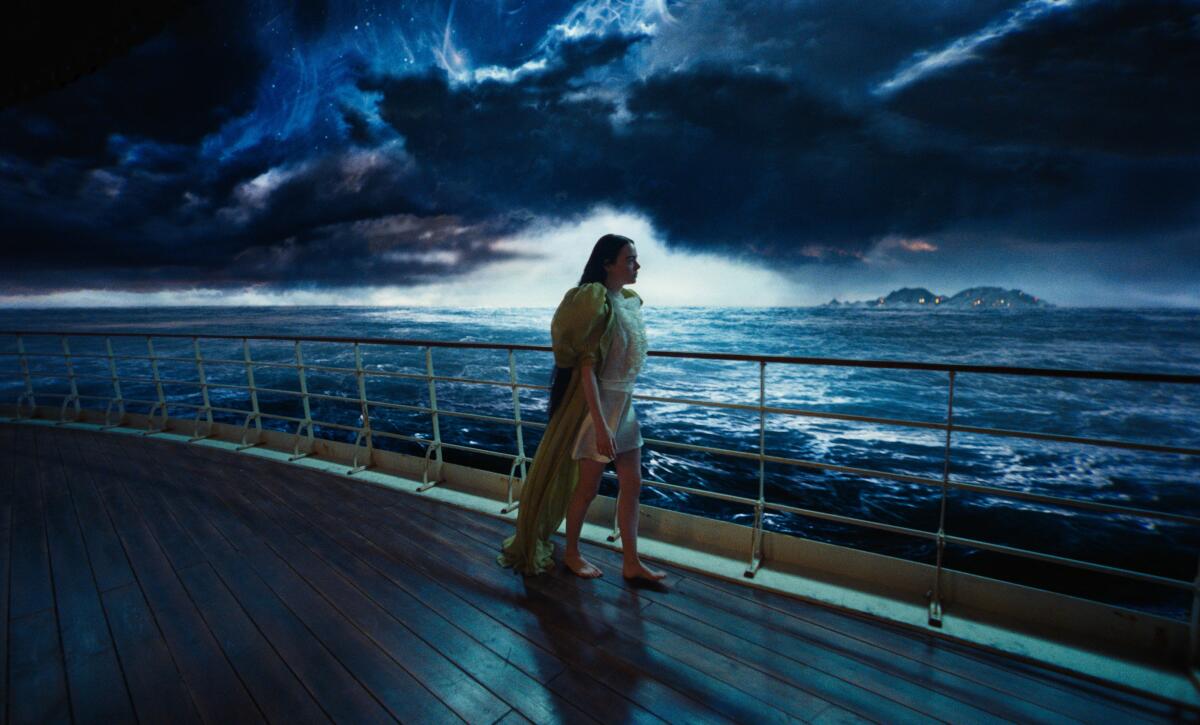
Emma Stone walks around the deck of the practically built ship in “Poor Things.” “The ship was pretty big,” notes cinematographer Robbie Ryan, “so we ended up with a wall that was 200 feet long and 70 feet high, like the biggest LED billboard you've ever seen. Union VFX built seven different skies that were placed on the wall and became our view from the window.”
(Reflector Images)
Talk about your various uses of color and black. and white.
Yorgos would love to shoot a feature film in black and white more than anything, and was eager to give it a place in this film. He rationalized that it would be better to do all of London in black and white and then switch to color for the flashbacks. Black and white comes back, but usually once we get to Lisbon, it's color from there. He loves color and contrast and had read about the use of Ektachrome on a TV show called “Euphoria.” We test it and process it in E6 so that it comes back positive. He looked great.
Almost all of the sets were purpose built, but it looks like lighting them could have been a nightmare.
No nightmares, just challenges. This world was completely fabricated; There were six sound stages with sets built into them that we had to light. Yorgos did not want [movie] lights on, which in a way made it easier for me, because I could make big skies within each stage. Obviously, this is labor intensive and there were a lot of lights involved, but the concept is simple: create a sky to illuminate all the sets within the space. We also used practical lighting on set, and shooting with film leans towards that type of natural photography. We did that with all the interior sets.
Each stage contained connected rooms and areas surrounding the building, correct?
The good thing is that you can look out the windows and see the world outside. All sets were built as composites. Shona Heath and James Price did an incredible job designing a set where you walked in the front door, walked up the stairs and into the bedroom, filmed all of that and it looked like it was a real place. That made our lives much easier; denied the need for any green screen or anything like that. Some of the rooms we didn't even film in!
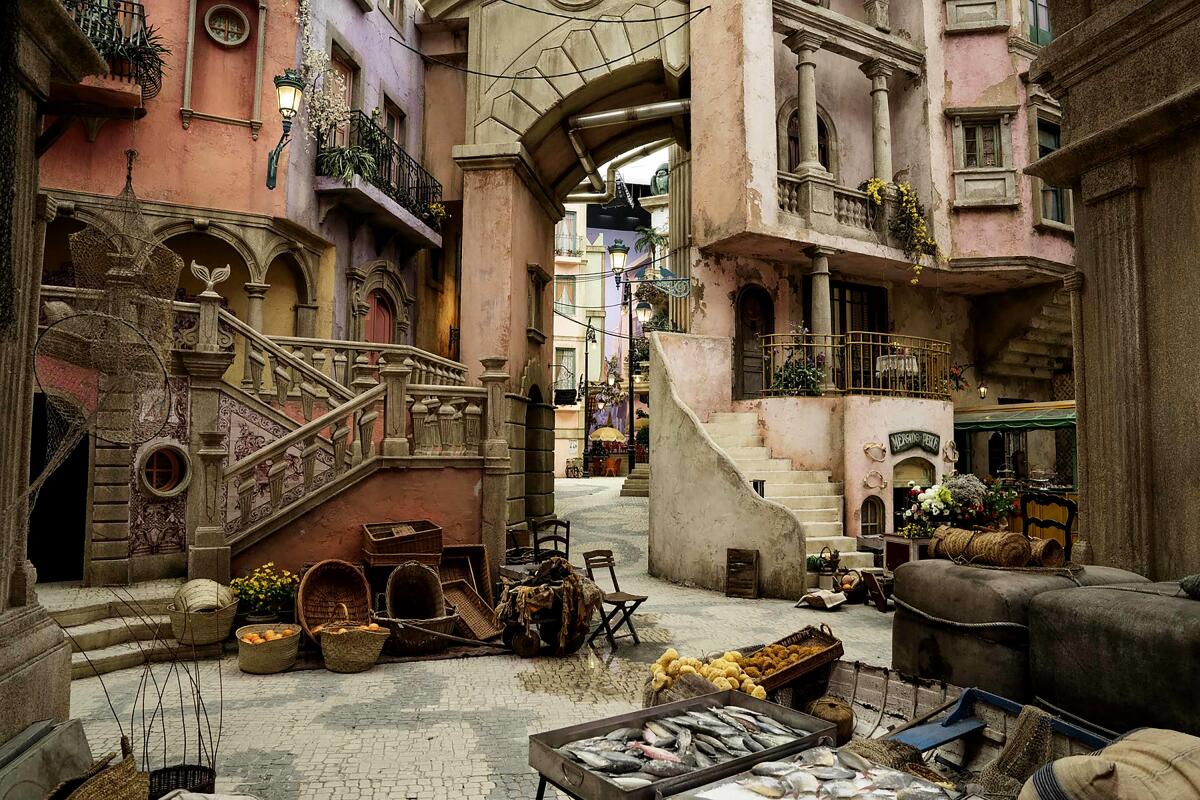
“We filled the biggest soundstage in Europe at the time with Lisbon,” says cinematographer Robbie Ryan. “It was one of the most difficult indoor sound stages to light, because it was meant to be a sunny, Lisbon-like world. I struggled with that because of the scale of it.”
(Reflector Images)
Lisbon seems to be the most elaborate of them, with lots of action both in the city and inside the hotel, bars and cafes.
We filled the biggest sound stage in Europe at the time with Lisbon. The only visual effects work was replacing the skies and maybe some extensions of the buildings, but the buildings were there. It was like a big theme park. It was difficult, because we were mainly at the Origo studios on the outskirts of Budapest, but that was at another studio called Korda, which was a two and a half hour drive away. It was one of the most difficult indoor sound stages to light, because it was meant to be a sunny, Lisbon-style world. I struggled with it because of its scale.
The cruise ship was another elaborate build, but didn't you have to create your own environment?
We were not at sea. Yorgos was interested in redoing old film techniques like rear projection, things he had seen in 1930s cinematography, with a view to 2022. LED technology is amazing now. Our approach was not to make a room with volume; we just wanted a backdrop. The ship was pretty big, so we ended up with a wall that was 200 feet long by 70 feet high, like the biggest LED billboard you've ever seen. Union VFX built seven different skies that were placed on the wall and became our view from the window. It was brilliant, but the practical problem was that when we filmed scenes on deck looking at these beautiful skies, people spilling into the lighting hit the wall and obscured it. The only way to avoid this is to completely separate the lighting so that it only reaches the subject. It was a trial and error approach, because he hadn't really done it before.
That applies to a lot of things in this movie.

